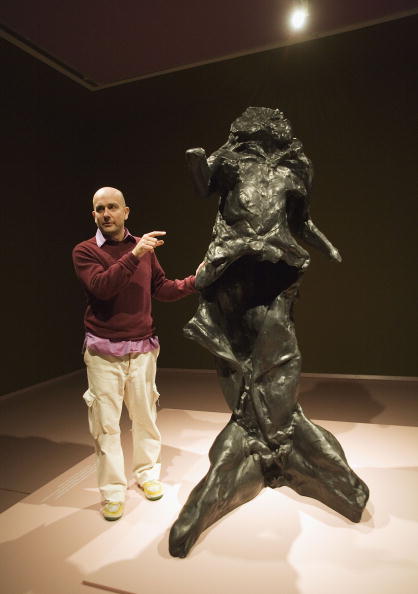Banned! The statues they won't let you see
A little-known committee is keeping top artists out of public spaces. Richard Osley reports

Your support helps us to tell the story
From reproductive rights to climate change to Big Tech, The Independent is on the ground when the story is developing. Whether it's investigating the financials of Elon Musk's pro-Trump PAC or producing our latest documentary, 'The A Word', which shines a light on the American women fighting for reproductive rights, we know how important it is to parse out the facts from the messaging.
At such a critical moment in US history, we need reporters on the ground. Your donation allows us to keep sending journalists to speak to both sides of the story.
The Independent is trusted by Americans across the entire political spectrum. And unlike many other quality news outlets, we choose not to lock Americans out of our reporting and analysis with paywalls. We believe quality journalism should be available to everyone, paid for by those who can afford it.
Your support makes all the difference.Banksy and Ronald Reagan make strange bedfellows. But they, together with the eminent sculptor Sir Anthony Caro, have something in common – they're not welcome in central London. Not, at least, in the eyes of the jury of experts that decides what public art should be allowed.
Obviously, the ban does not apply to the dead former US president, but rather to a bronze statue of him on the Berlin Wall, proposed for Grosvenor Square in Mayfair.
The project has joined other artworks and monuments rejected by the little-known Westminster Public Art Advisory Committee, whose work is rarely publicised despite its power to influence the look of some of the capital's best-known locations.
According to confidential minutes of meetings released to The Independent on Sunday, the plan to honour Reagan by the US artist Chas Fagan was ruled out in April after members said the work was "weak", "lacking gravitas" and risked "cluttering" the square outside the American embassy.
The work now joins the panel's rejected list, which includes Marc Quinn's giant steel orchid outside Hertford House, ruled "anachronistic". The panel advised it "would be happier if the time and effort of the applicant goes into getting the fountain there working again".
The influential panel deals in the high numbers of public art applications. Its members are drawn from institutions such as the Royal Academy of Art. A negative view usually forces artists to review their plans or kill them altogether.
Banksy was told his Murdered Phone Box, a bent-double red phone box left in Soho Square, had been taken to a council depot and he should go through the proper approval process. Caro's Millbank Steps were offered as a gift for Parliament Square but rejected as too large for other sites.
During early discussions on what should go on Trafalgar Square's empty plinth, the panel decided the humour in Sarah Lucas's abandoned Ford Fiesta "would dry up after 10-18 months".
Jo Darke of the Public Monuments and Sculpture Association said: "I can appreciate the view about cluttering Westminster, but there are lots of dark corners that could be brightened up by a sculpture."
Join our commenting forum
Join thought-provoking conversations, follow other Independent readers and see their replies
Comments